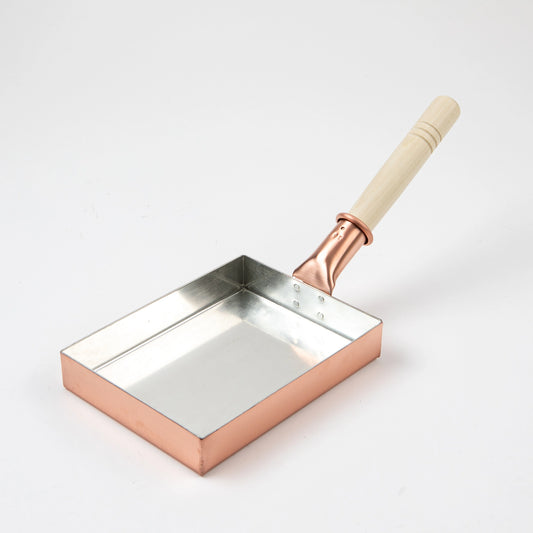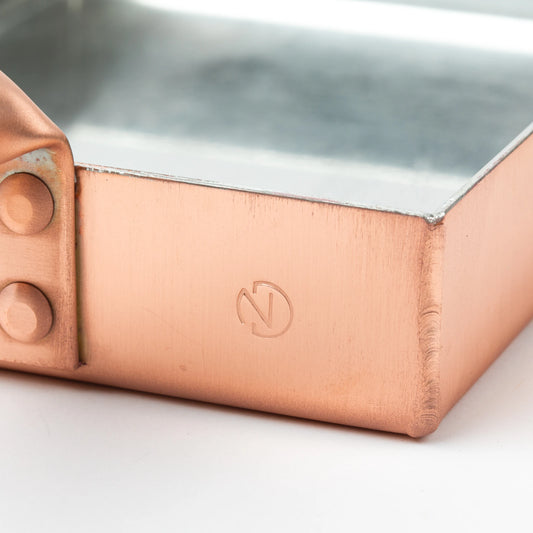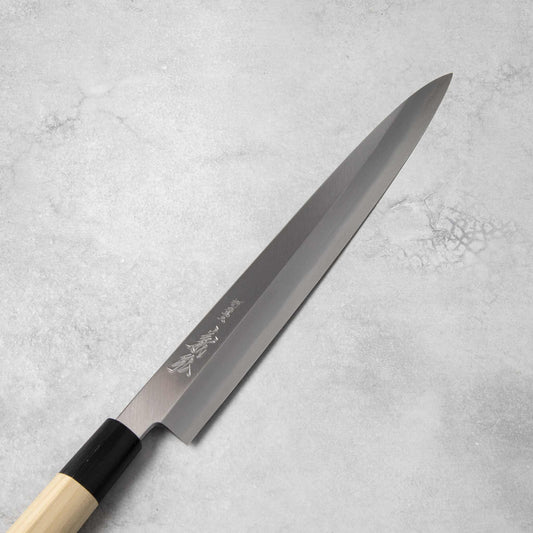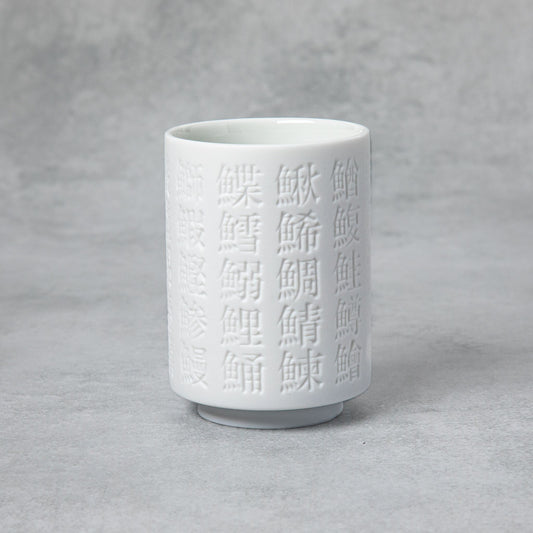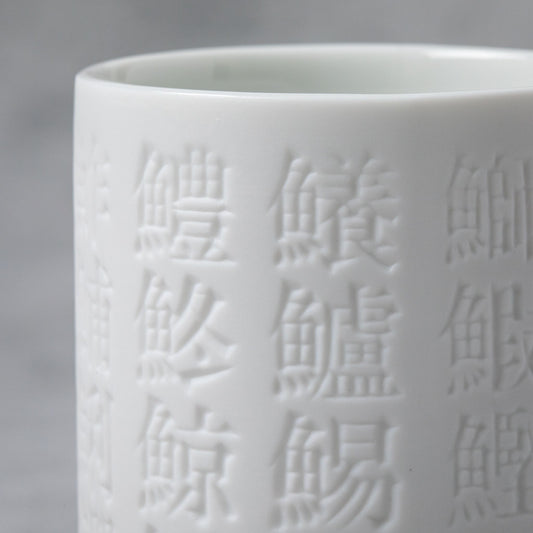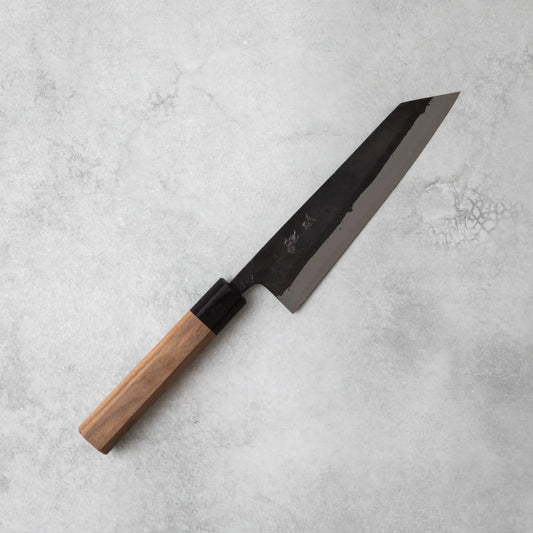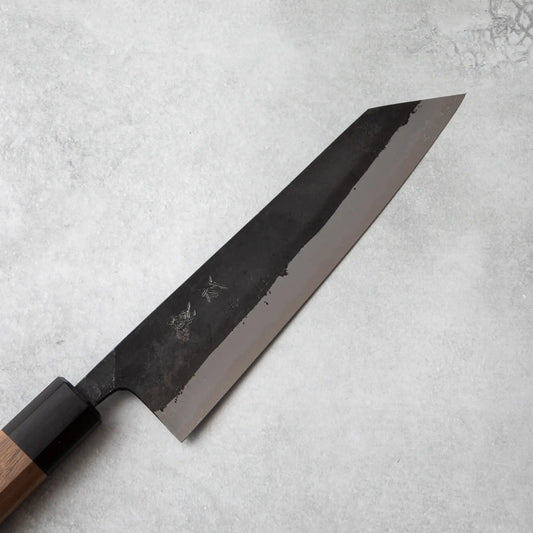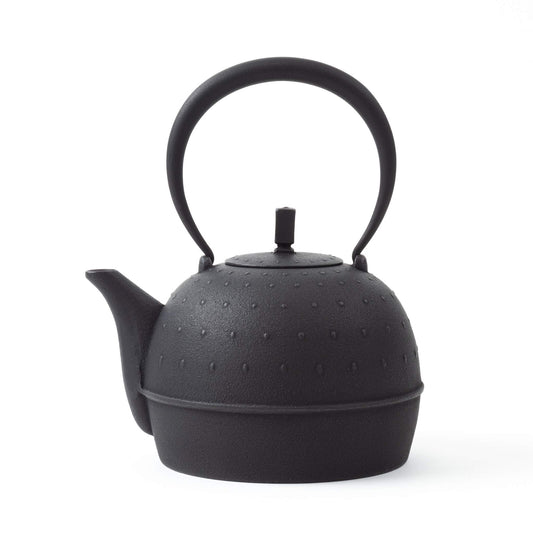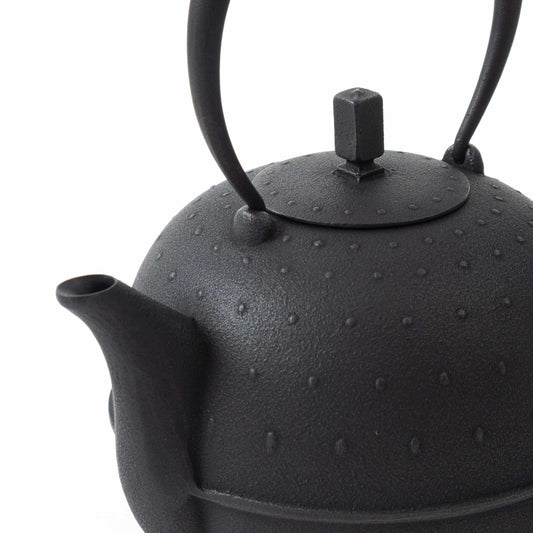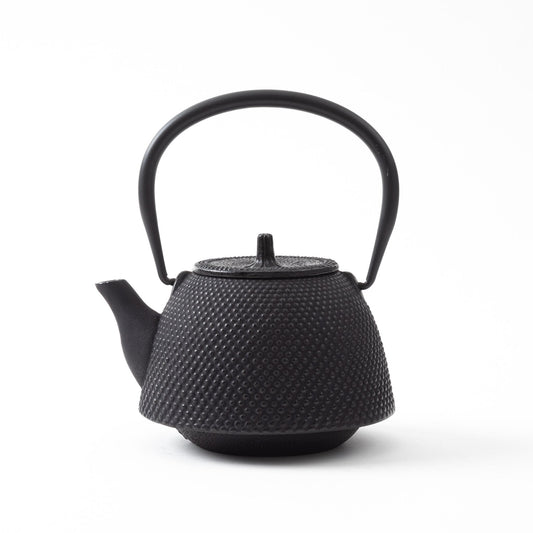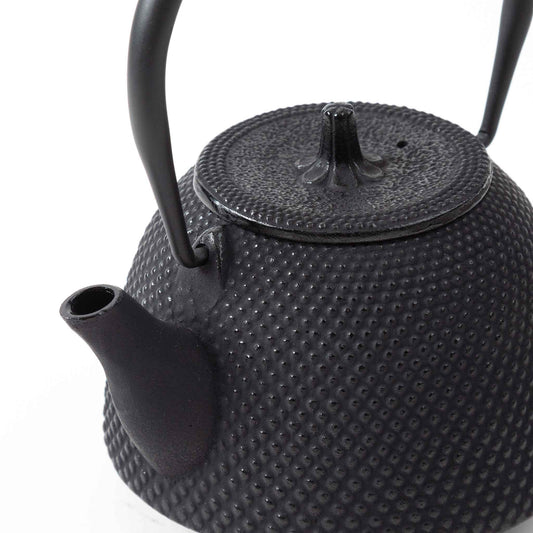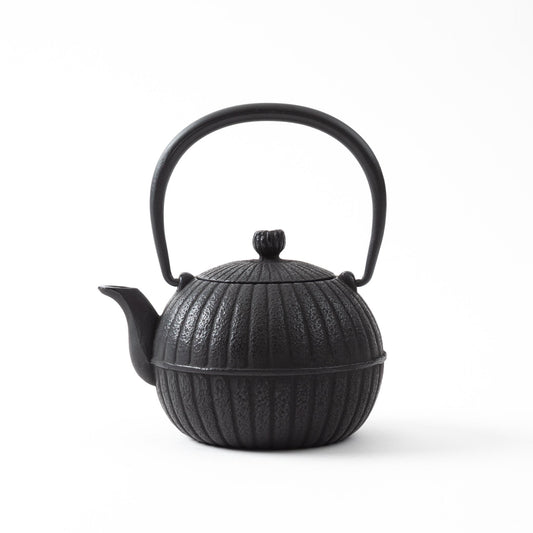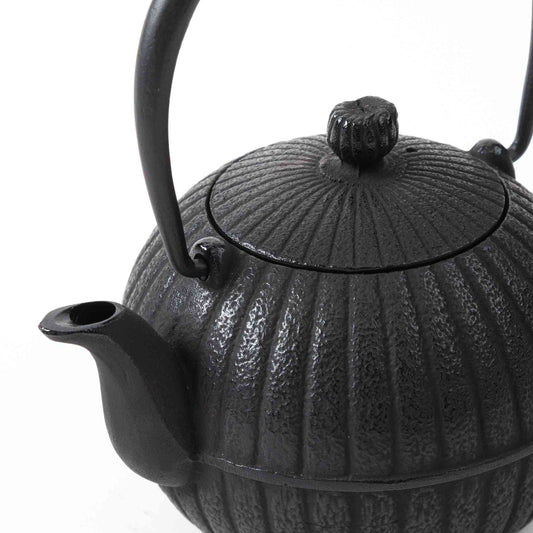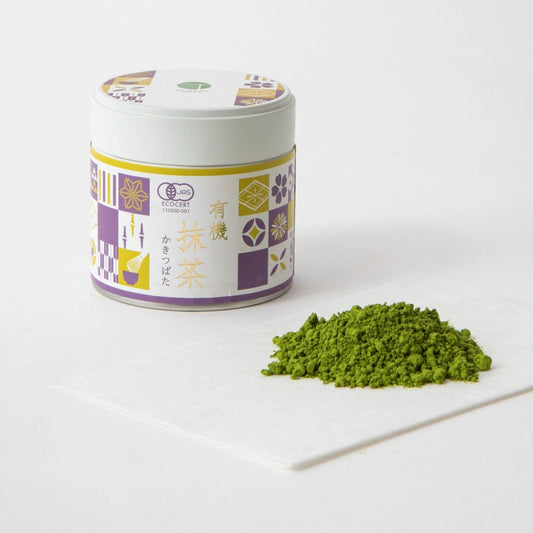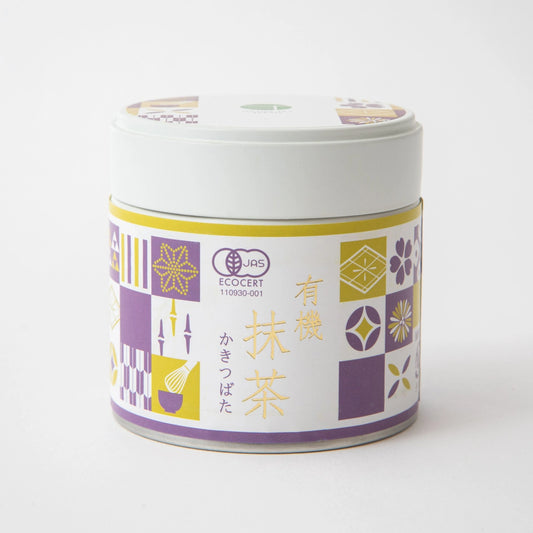The scent of heated copper and the quiet rhythm of hammer on metal fill the air inside Nakamura Douki Seisakusho’s workshop, where tradition is not counted in years, but in generations. For nearly a century, this family-run forge in Japan has devoted itself to the art of copper craftsmanship, refining its technique with patience and pride. Nakamura Douki Seisakusho’s copper cookware is beloved by top chefs and sushi masters across Japan. Their mission is simple yet profound: to help cooks, both professional and home, experience the full potential of copper’s unmatched heat conductivity, retention, and lasting durability.
Born from this legacy, Nabemura Co., Ltd. was born and has established itself as a revered name in Japanese kitchens. Their beautifully handcrafted pans, favored by sushi masters and top chefs alike, are not just tools; they are a testament to quiet mastery and enduring quality. Our team at Omakase is proud to introduce a truly remarkable piece of craftsmanship: the Nabemura Copper Tamagoyaki Pan.
More than a cooking tool, this is a living legacy designed to perform with precision, built to endure, and destined to be treasured for years to come.
From Heat Control to Flavor: The Hidden Power of Copper Pans
With so many materials available for cookware: iron, stainless steel, non-stick coatings, you might wonder: why choose copper? According to the skilled team at Nabemura, the answer lies in copper’s unmatched performance. Compared to other materials, copper offers superior heat conductivity and retention, allowing for precise temperature control. It heats quickly and evenly, reducing the risk of hot spots, burning, or uneven cooking. Many of their customers say they choose copper because it “brings out a mellower flavor.”
One of the most celebrated qualities of copper is its residual heat. Even after turning off the stove, the pan continues to cook gently. Eggs turn out light and fluffy, while meat remains juicy and tender, locking in its natural flavors.
 Nabemura’s craftsmanship also extends to the finishing process. Unlike standard copper cookware that uses tin plating, their pans are coated with tin through a meticulous baking method. This baked-on tin layer helps moderate copper’s high heat conductivity, ensuring the pan maintains an optimal cooking temperature throughout. It also protects against oxidation while offering greater durability. Because the tin is applied layer by layer with heat, it adheres more firmly, minimizing peeling and ensuring the pan remains in excellent condition for decades.
Nabemura’s craftsmanship also extends to the finishing process. Unlike standard copper cookware that uses tin plating, their pans are coated with tin through a meticulous baking method. This baked-on tin layer helps moderate copper’s high heat conductivity, ensuring the pan maintains an optimal cooking temperature throughout. It also protects against oxidation while offering greater durability. Because the tin is applied layer by layer with heat, it adheres more firmly, minimizing peeling and ensuring the pan remains in excellent condition for decades.
The result? A pan that’s not only beautiful and functional but also built to last is a trusted companion in both professional kitchens and home cooking alike.
Nabemura Copper Tamagoyaki Pan
If you're not familiar with tamagoyaki, it's a classic Japanese rolled omelet made by layering thin sheets of seasoned, beaten eggs, traditionally cooked in a rectangular pan. While eggs are the star of the dish, many recipes include ingredients like sugar, soy sauce, dashi, mirin, and salt to create a beautifully balanced sweet-and-savory flavor. Tamagoyaki is a true staple in Japanese cuisine, enjoyed everywhere from homemade breakfasts and bento lunches to high-end sushi counters.
Freshly cooked tamagoyaki offers a delightful harmony of texture and taste: soft, warm, slightly custardy, with the rich umami of dashi and soy sauce gently offset by the sweetness of mirin and sugar. It's comforting, satisfying, and undeniably addictive; you’ll find it hard to stop at just one bite.
Achieving that signature texture, however, depends heavily on the right cookware, and that’s where the Nabemura Copper Tamagoyaki Pan shines. Handcrafted by Nabemura, a fourth-generation copperware maker in Japan, this pan is the result of decades of dedication to traditional craftsmanship.
One of copper’s greatest advantages is its high thermal conductivity, which means heat spreads rapidly and evenly across the entire surface of the pan. For delicate dishes like tamagoyaki, this ensures that each layer cooks quickly and uniformly without hot spots or burning. The result is a thin, beautifully rolled omelet every time.
Over time, the pan becomes even easier to use and slowly gains character. Another standout feature is its perfectly angled handle, designed for smooth flipping and effortless control, whether you're a seasoned chef or a curious home cook. Built to last and made with care, the Nabemura Copper Tamagoyaki Pan isn’t just a kitchen tool; it’s an investment in tradition, precision, and flavor.
Make It Last: How to Properly Use and Maintain Your Copper Tamagoyaki Pan
To ensure your Nabemura Copper Tamagoyaki Pan performs beautifully for years to come, proper care is key. While copper cookware is prized for its responsiveness and durability, it also requires a few simple steps to maintain its quality and shine. Whether you're using it for the first time or cleaning up after a delicious meal, following these guidelines will help preserve its craftsmanship and cooking performance.
Before First Use
To prepare your new pan for cooking, start by rinsing it thoroughly with water and drying it completely. Fill the pan about halfway with oil and heat gently over low heat. Using a paper towel or cloth, spread the oil evenly across the interior surface, allowing it to simmer for 4–5 minutes. For this initial seasoning, we recommend using a generous amount of oil and cooking only eggs, without any broth, to allow the tin lining to set properly.
After Each Use (Interior of the pan)
In most cases, simply rinsing the inside with water is enough. If needed, use a soft sponge with mild detergent. For tougher residue, a gentle cleanser can be used. Over time, you may notice minor scratches in the tin lining or areas where the copper begins to show through—this is completely normal and does not affect the pan’s safety or performance.
After Each Use (Exterior of the pan)
Rinse and dry the exterior thoroughly, then polish it with a soft cloth to maintain its appearance. A mild cleanser may be used to restore the natural copper sheen, though it’s worth noting that copper will naturally develop a patina and darken over time, a sign of character and continued use.
Tips for Cooking Tamagoyaki with a Copper Pan
Using a copper pan to make tamagoyaki brings precision and finesse to your cooking, but a few helpful tips will ensure the best results every time.
-
Generously oil the pan.
Before pouring in the egg mixture, make sure the pan is well-oiled. Many Japanese home and professional cooks use an oil-soaked paper towel to evenly coat the surface. This not only prevents sticking but also helps the pan develop a natural non-stick layer over time. -
Season with use.
With continued use, your pan will become increasingly well-seasoned. As you cook, a protective layer of polymerized oil forms on the surface, enhancing performance and making the pan even easier to work with. -
Use low heat.
Because copper conducts heat quickly and evenly, it’s best to cook tamagoyaki over low heat. This prevents burning and gives you better control when rolling thin layers of egg. However, be sure the pan is properly preheated before adding your egg mixture—if it’s too cold, the eggs may stick.
With a little practice and care, your copper tamagoyaki pan will become a treasured tool for making beautifully fluffy, golden omelets time and time again.
A Visit to Mitsui: A Sushi Chef and His 7-Year-Old Nabemura Copper Pan
To truly understand the craftsmanship and performance of the Nabemura Copper Tamagoyaki Pan, we visited Mitsui, an intimate omakase sushi restaurant known for its refined technique and thoughtful pairings. Chef Mitsui sharpened his skills at prestigious establishments such as Harutaka in Ginza and Sushi Sho in Nishiazabu. In addition to being a seasoned sushi chef, he is also a certified sake sommelier, known for his meticulous attention to flavor harmony.
We had the privilege of sitting down with Mitsui-san to talk about his experience using the same Nabemura copper tamagoyaki pan for over seven years. From the precision of the copper's heat distribution to the deeply personal connection he has developed with his tools, his insights reflect the heart of Japanese culinary craftsmanship.

Why did you choose to use products from Nabemura?
"I’ve been using the same Nabemura pan since my training days. At the time, I wasn’t allowed to practice with the tools at the restaurant, so I decided to purchase the exact same model myself. It wasn’t inexpensive, but the investment was worth it; the pan I bought back then is still going strong after seven years of daily use. It’s become an essential part of my craft."
Please note that the pan used by Mitsui-san is custom-sized.

Merits and Usability of the Copper Tamagoyaki Pan
“Copper cookware is truly in a league of its own, especially when compared to Teflon pans. It heats up rapidly and reacts with remarkable precision to subtle changes in temperature. When I cook with it, it feels as though my own senses are directly connected to the pan; it responds intuitively to my movements and adjustments.
What I particularly appreciate about this copper tamagoyaki pan is its perfectly flat base. When making delicate dishes like datemaki (rolled sweet omelet), the batter spreads out evenly without pooling or sticking. There’s no patchy heat, just a beautifully even distribution that ensures the entire surface cooks uniformly. The difference in the final result is immediately noticeable: smooth, consistent, and professional-quality every time.”
Tips for Home Cooks Using Professional Tools
“First and foremost, it’s essential to build a sense of care and attachment to your tools—that's the foundation of good cooking. You don’t need to use the large-scale equipment we use in professional kitchens. In fact, smaller, more manageable tools are often better suited for home use.
One crucial step is properly preparing your pan with oil before cooking. Be sure to coat the entire surface thoroughly and heat it until the oil is just about to reach its boiling point. Then, allow the pan to cool slightly before adding your egg mixture. Skipping this process can cause the eggs to stick, making it much harder to achieve the smooth, delicate texture that tamagoyaki is known for.”
Conclusion: A Legacy of Craftsmanship in Your Kitchen
Whether you're a seasoned chef or a passionate home cook, the Nabemura Copper Tamagoyaki Pan offers more than just excellent performance; it brings the artistry of traditional Japanese craftsmanship into your hands. Hand-forged one at a time, each pan is a testament to generations of dedication, skill, and pride.
Its precise heat control, even cooking surface, and long-lasting durability make it an ideal tool for mastering tamagoyaki and countless other delicate dishes. With proper care, this pan doesn’t just perform beautifully; it becomes a trusted partner in your cooking journey, improving with every use.
If you're ready to experience the difference that professional-grade copper cookware can make, we invite you to invest in a piece that embodies Japanese culinary heritage. The Nabemura Copper Tamagoyaki Pan isn't just a tool; it's a lifelong companion in the kitchen.




